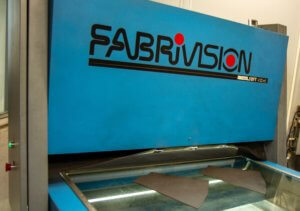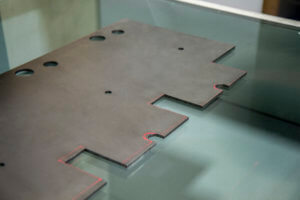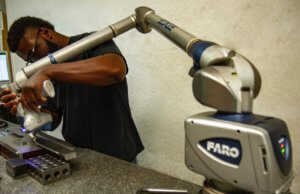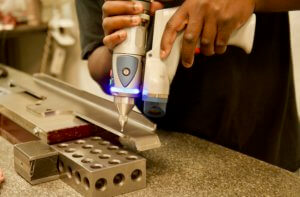Laser Precision Has Vision – In Every Sense of the Word
June 25, 2018
Vision can be described as the ability to plan the future with imagination and wisdom. That is certainly an accurate description of what we aspire to at Laser Precision. We constantly search the fabrication market to find equipment that will provide better repeatability, accuracy and precision for the parts we manufacture. Frequently we are pioneers, adopting technology far ahead of the competition. Occasionally we wait for improvements that will make a product worth the effort. We’re always beta testing devices today, and experimenting to see if it has additional applications for tomorrow.
Mechanical vision works by using an input device (usually a probe, digital camera or laser) that loads data points from an object into a software program where it can be analyzed and put to use. For example, scanning a part to reverse engineer it for production. We currently have three systems in house that utilize a combination of these input methods.

Taking a Snapshot
Our first piece of vision equipment we acquired was a 2D FabriVISION scanner, which we have been using since the early 2000s. It uses high definition cameras to capture dimensional data off of a part laid on a flat table. The camera takes a photo, which then gives us the outline of whatever lines it finds. We compare that to a 2D CAD model used to cut the part to ensure we are within our acceptable range of tolerances designated by our customer’s specifications.
Why has our FabriVISION seen continual use for almost three decades? The average part has over 20 dimensions, even if it is a flat surface. If you were to take those dimensions manually, you’d be using a combination of a height gauge and caliper, which could take upward of 30-40 minutes for each part. The FabiVISION can do the same task in 2-3 minutes. It’s an older technology, but we feel it still has some practical application for the work we perform.

Laser Measuring
Our Virtek scanner works on a flat table like the FabriVISION but uses a laser beam to trace the lines it finds on a part and then uploads the data. Its biggest advantage is speed. It outlines the same 20 dimensions as the FabriVISION, but brings the time down to 10-20 seconds!
If it’s so fast, why hasn’t the Virtek replaced the FabriVISION system all together? The truth is that older technology does still have its benefits. There are a lot of things built into the more mature software that we functionally like for the work we perform. Have you ever made an update on your computer or phone and found you’ve lost some of your favorite features? It’s the same thing.
 The Scanner of Tomorrow
The Scanner of Tomorrow
Our latest vision scanning system acquisition is the FaroArm, which measures the physical geometrical characteristics of an object. FaroArms are always equipped with a manual probe, which allow manual measurements to be taken wherever you are able to draw those points out in 3D space. However, the probe can only capture one point at a time. The FaroArm also has a laser scanner that can capture millions of points in seconds to build what is called a “point cloud.” We can set up X, Y and Z-axes and take dimensions from the features (a plane, a hole, a bend, etc) we identify out of the point cloud.
This is really new technology. We’re using it now, but we think it’s greatest potential is yet to come as the software improves. For now we’ve found using a combination of both scanning and hard probing has yielded the best results, with the scanning option working best to reverse engineer parts and confirm in-process dimensions.

Future Applications for Scanning
As new hardware and software becomes available, we will continue to actively explore all our scanning technology for new applications including measuring, PPAP, quality inspection, CAD-to-part analysis (tolerance verification), analysis of production steps, as well as enhanced reverse engineering.
The reason for this investment in time and capital is to find new ways to honor our commitment to deliver quality parts to our customer on time, every time.
If you would like to learn more about the quality of parts we manufacture, please contact us.

